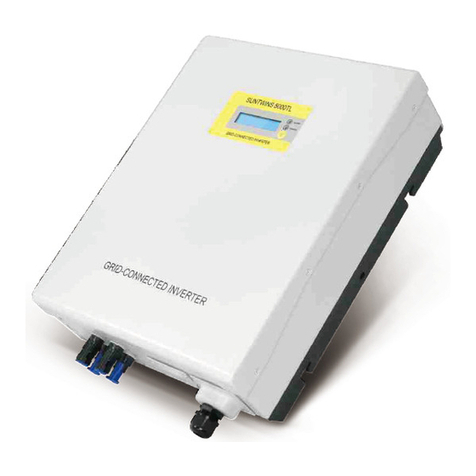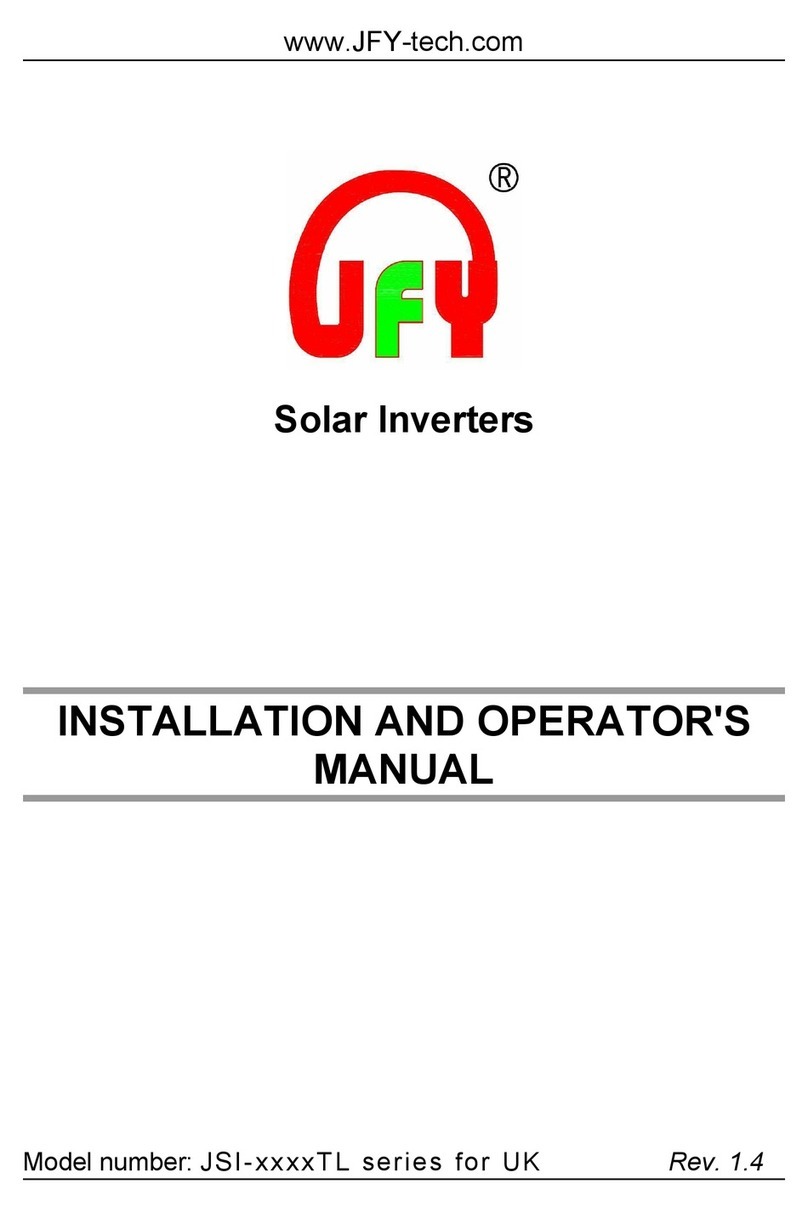
www.JFY-tech.com
3
GENERAL PRECAUTIONS
For your own safety and that of the unit, you must read and understand the
instructions contained in this document before starting to work.
Keep these instructions in a place accessible to all the personnel who work
with the unit so that these may be consulted.
Only professional technician may install and operate our units.
WARNING:
To avoid
isk of electric shock from energy stored in capacito
,please
wait fo
at least 5 minutes to access the conducto
part of input o
output
terminals of the inverte
afte
it is disconnected from the output of PV
panel and AC grid.
There is a fuse in our units. For continued protection against risk of fire,
replace only with same type and ratings of fuse. The replacement should be done
by qualified service personnel.
The installation of inverte
must be performed in full compliance with the
National Wiring Rules of Standard AS/NZS 3000 and other relative local
standards and regulations.
No spare parts in package box. To avoid risk of electric shock, Do not remove
machine cover. No user serviceable parts inside. Refer servicing to qualified
service personnel. Please contact your reseller if you need to know the
nearest authorized repair center or qualified service personnel.
As a qualified service personnel, you should know both ac and dc voltage
sources are terminated inside this units. Each circuit must be individually
disconnected before servicing.
Read and understand all the instructions contained in this manual and become
familiar with the safety symbols in the relevant paragraphs before you install
and commission the equipment.
The connection to the AC grid must be done only after receiving approval from
the administering authority as required by national and state interconnection
regulations, and can be done only by qualified personnel.
Keep the whole surface of the photovoltaic panel covered with material
opaque to solar radiation before connecting panel to equipment; this will
ensure that no dangerous high voltage is present at the connection cables.
This unit is designed to feed power to the public power grid (utility) only. Do
not connect this unit to an AC source or generator. Connecting Inverter to
external devices could result in serious damage to your equipment. By the
way, we have special types for these applications. If you are interested, please
contact your local dealer.
Although designed to meet all safety requirements, some parts and surfaces
of Inverter are still hot during operation. To reduce the risk of injury, do not





























